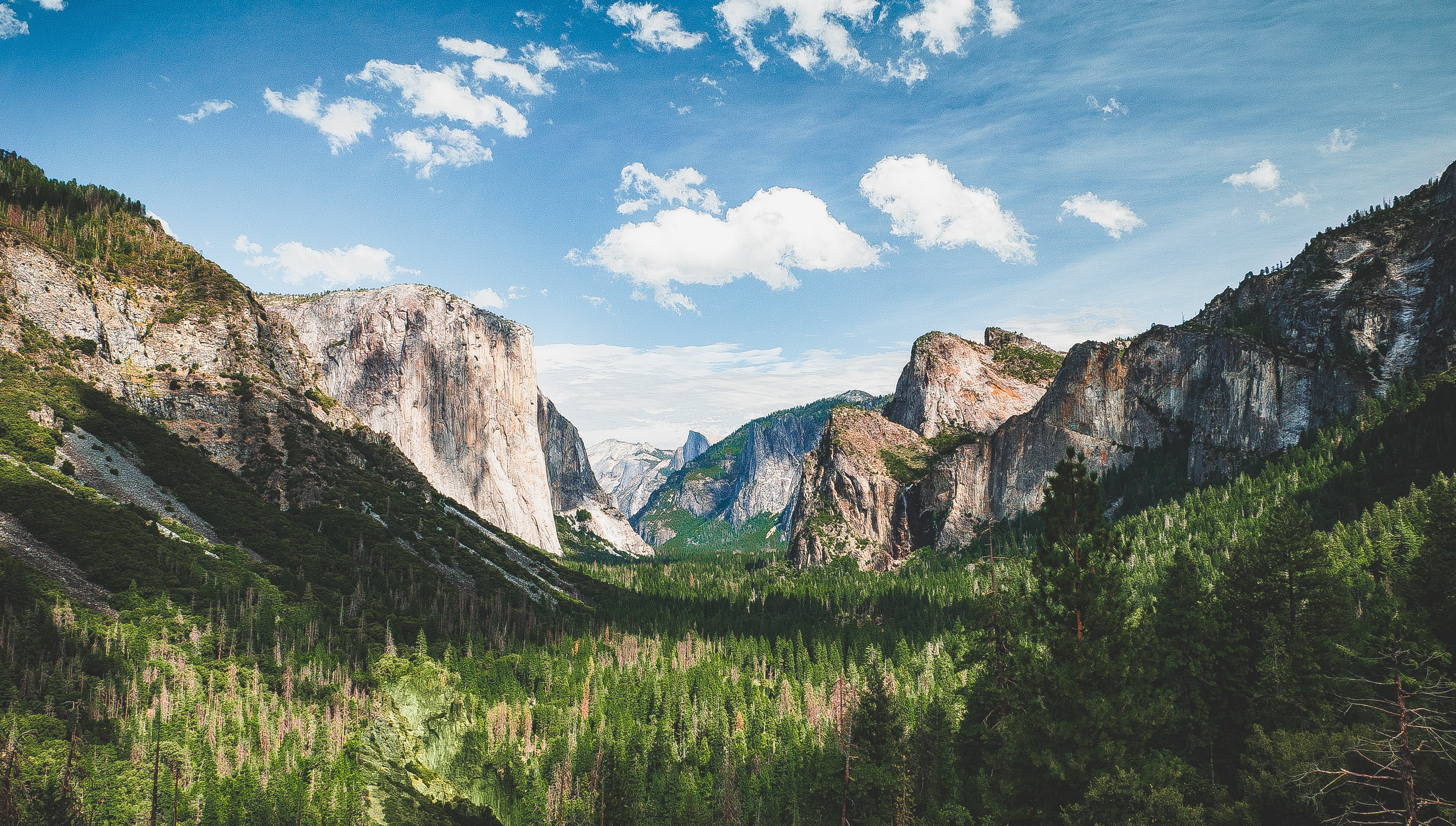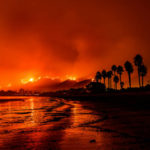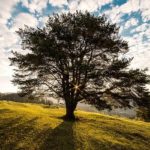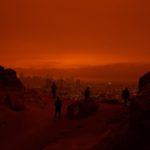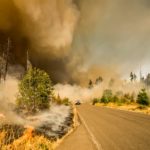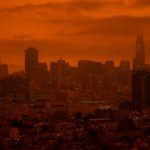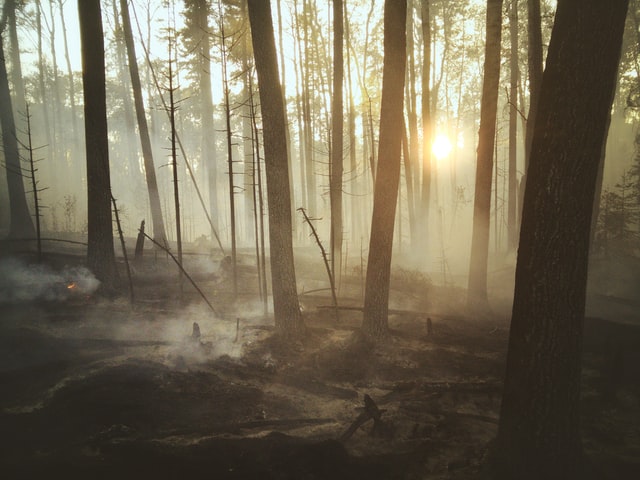
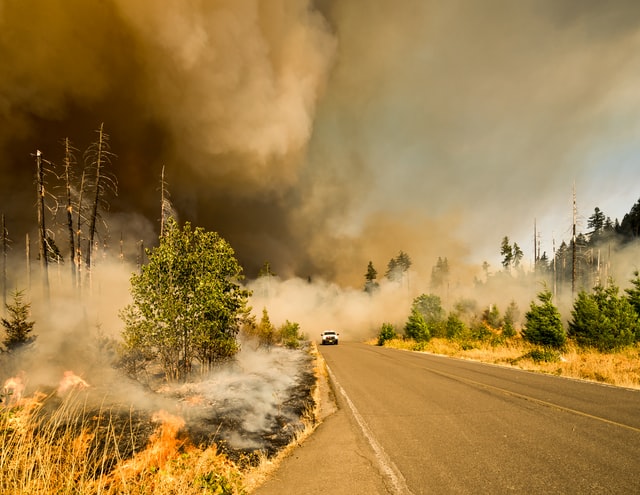
California is preparing itself for yet another disastrous fire season.
The last two years have brought drought to the Northern California Region and with moisture in the soil at an all-time low, the dry vegetation is all set to incinerate like a tinderbox. A recent wildfire that laid waste to the regions around Los Angeles was a harbinger that the fire season may have already begun.
But what is causing this rash of wildfires in the Northern California region?
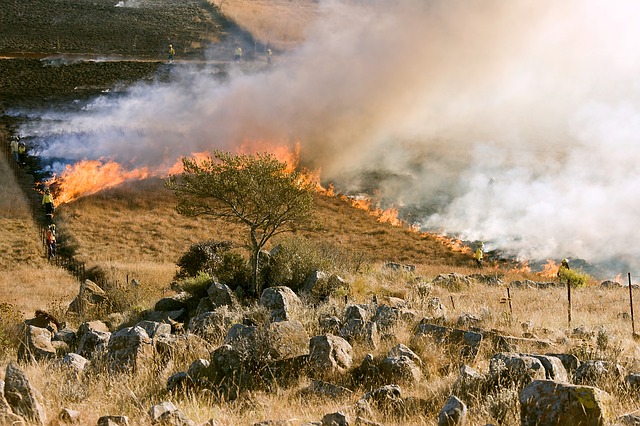
The first reason for a rapid increase in wildfire is California’s climate.
“Fire is a pretty simple subject,” says bioclimatologist Par Williams working at Columbia University’s Lamont-Doherty Observatory. “So long as you have a dry combustible fuel all it takes is the smallest spark and a fire will start.”
Like much of the Western US, California enjoys a season of moisture during the fall and winter. Throughout the hot and dry summer months, the vegetation gets dry and makes the perfect kindling to be set ablaze.
Of course, the climate and vegetation in California has always been prone to fire, but a link between climate and the advent of much larger fire has been established. “The connection between climate change and the severity of fire storms is straightforward. As the warmer climate creates an even drier atmosphere it increases the abundance of fuels for the fire.”
The record of wildfires in California has been carefully collected since 1932. The 10 largest wildfires ever recorded occurred since 2000 with the largest ever recorded being 2018’s Mendocino Complex Fire and the L.N.U. Lightening Complex. “What we are seeing is that California contains all the natural ingredients for severe wildfires to occur. Nature creates the perfect settings with dry combustible fuel and then people start the fires. Now that climate change is making this tendency for fire even greater, the occurrence of serve fires has increased.”



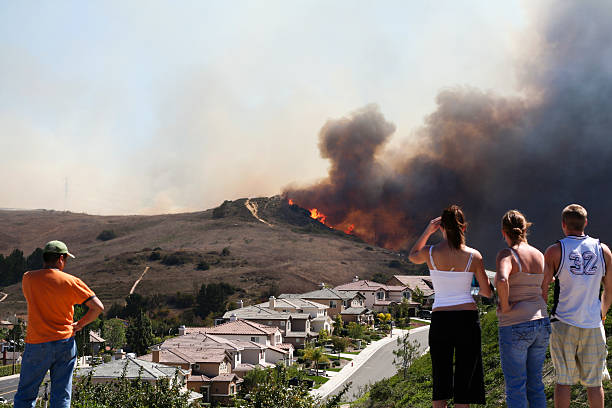
Even if all the conditions for a fire are present, there will be no fire without some sort of ignition. As we saw in the L.N.U Lightening complex, nature can provide this source of ignition in the form of lightning. But more often than not, it is humans who begin these fires.
Many wildfires have been caused by downed power lines. In 2018, the Carr Fire was started because of a tire blow out that caused a truck’s rims to scrape against the asphalt sending out a few sparks that managed to catch the countryside on fire. But in addition to accidents, many wildfires are started through simple bad ideas and carelessness. This was the case when the fireworks used in a gender reveal party got out of hand.
In addition to carelessness, humans can contribute to fires in other ways. The climate has been warming due to the abundance of greenhouse gasses and this can create an even drier atmosphere that creates an especially suitable condition for a wildfire. But there are other ways in which humans can contribute to the occurrence of wildfires. Many people are moving to properties close to forested areas, called urban-wildland interface and here simple human activities from cookouts to smoking can provide the ignition needed to begin forest fires.
The last thing anyone expected was that the history of fire suppression techniques practiced by the United States has actually made modern wildfires even worse.
Over the last 50 years we have been doing all we can to prevent and suppress fire fighters in the Western United States and have had a great deal of success. This means that every time we successfully fought a fire, a lot of stuff that should have burned didn’t burn. This means that over the past 50 years we have been collecting a vast quantity of combustible materials.
This happened in California more than anywhere else. Now when a fire begins in one of these regions with excessive amounts of dry combustible plants, what could have been a small and manageable fire can quickly turn into a holocaust as over a hundred years’ worth of dry plants are instantly ignited. This has caused the US Forest Service to look for ways to rectify this small problem through controlled burning.
During the Fall, strong winds blow across Southern California from the Great Basin area. These are called the Santa Ana winds and occur frequently from June to September driven by the warmer drier weather. This is when the Western fire season occurs in forests with higher elevations.
Experts have also been identifying a second fire season that occurs from October to April also caused by the Santa Ana winds. During this second season the fires spread much faster and can burn close to urban areas. These have been the cause for almost 80% of the economic damages caused by wildfires since the early 90’s. And this brings us back to the issue with climate change.
Connecting the cause of any particular wild fire to the advent of climate takes considerable time and considerable analysis from the perspective of attribution science. Nevertheless, it is understood that greenhouse gasses produced by a wide range of human activities affect everything that occurs within the atmosphere. Furthermore, it an established fact that the warmer the climate the drier the atmosphere and the greater propensity the West has to become a fiery spectacle.
How people are preparing for the 2021 California wildfire season
Those that have spent considerable time and grown up in the San Francisco Bay area have learned much about the presence of wildfire in this area. Many families will keep bug-out bags at the ready close to the door just in case a fire warning is announced, especially during the month of October. But now as wildfires are becoming bigger and more threatening, the necessary preparations are even more important.
The late summer and early fall in 2020 has been characterized by some of the worst wildfires in recorded California history. According to Cal Fire, the California State Fire Agency, almost 4.3 million acres of land has been burnt to ashes in 2020. Fires have also destroyed more than 10,000 buildings and killed 33 people in 2020.
But the fire season set to take place in 2021 could be even worse. The entire region has been experiencing extreme drought / El Cerrito is in an exceptionally severe drought and wi9th the highest possible ratings.
When fires ignite this year. The dried-out trees and plants will ignite easily. Typically, strong winds were required to fan the flames and spread the fire. But this year the abundance of dry fuel in the area will allow for any wind of any strength to move fires along easily and the fire is expected to spread rapidly.
The fire season has already kicked off with a devastating start. Spring is not typically a fire season at all, but there were more than 809 fires reported between January 1st and May 30th 2021. These untimely wildfires burned 13,000 acres over last year’s figures for the same time.
The wildland-urban interface fire problem:
Researchers and fire fighters alike are tentatively eyeballing high risk areas with considerable concern. These areas have undeveloped land and also regions where many people live.
Diablo winds wind their way through the mountains and hills as they make their way toward the seas in the bay area. They are most common in the month of October but they can occur at any time of the year. When fires occur at the same time as these furious winds, they can be even harder to control and spread rapidly.
Eucalyptus trees grow abundantly in the region and these can be especially flammable. If a fire would begin at the top of a hill, it would soon spread down the hill driven by the Diablo winds and stopping such a blaze would be a difficult task. The result would be a swath of flaming destruction that would not stop till it had reached the bay.
This fire season is expected to be severe and future fire seasons are expected to get progressively worse as drought and climate change contribute to favorable wildfire conditions. Residents of the local area are now preparing themselves for a fast evacuation, creating more fire-resistant homes and creating support systems with their neighbors.
Two of the most important ways that residents of El Cerrito and Northern California can prepare themselves well for this fire season will be to have a functioning evacuation plan and be prepared to execute this plan in all haste. It is equally important to be aware of the weather and pay attention to the official reports on the situation brewing across the area.
Home hardening is one of the more common and effective practices of protecting homes by building fire-resistant structures. This can include tasks like keeping homes clean and clear as well as replacing roofs with fire-resistant roofs. Some of these projects can be especially costly, a brand-new fire-resistant roof can cost upwards of $22,000. Furthermore, grants for home-hardening are not easy to obtain. The good news is that there are many cost-effective methods of home hardening.
Fires typically begin from small embers being scattered by the wind and falling on readily combustible materials. Therefore, keeping gutters clean and clear of dry leaves is a good way to protect the home. Landscaping should also be planned and regularly cleaned to avoid the presence of flammable materials in the yard. It is also a good idea to keep garage doors closed on windy days.
In addition to taking care of one’s own property, it is a good idea to team up with other members of the local community and your neighbors to ensure that the community as a whole is protected from the effects of wildfires.
Communities are encouraged to qualify for FireWise Certification that includes organizational practices and preparatory steps. FireWise is a special program created by the National Fire Protection Association that brings neighborhoods together to learn more about the major fire risks and what can be done to minimize them. These programs are based on the premise that it is better to meet up with your neighbor and plan a fire safe environment than to meet up with them when the flames are already licking the border of the community.
The ferocity of California Wildfires has achieved a milestone event — the first “gigafire”, which is a wildfire that has spread across 1m acres. On Monday, the August fire complex expanded across 1m acres of Northern California and grew beyond a catastrophic ‘megafire’ to colossal ‘gigafire’. This term has never been used or needed in the history of wildfires.
With an area of over 1.03m acres, the big fire has grown to cover an expanse of land larger than the state of Rhode Island and affected over 7 counties, according to the Cal Fire agency. This represents an amalgamation of wildfires that have been caused by lightning striking dry areas of forest. This vast conflagration burned for over 50 days at which point it was only half contained.
The August Fire Complex has topped a list of fires that have had a devastating effect on the 4m acres of California territory this year. The only word that Cal Fire could use to describe this unprecedented phenomenon was ‘mind-boggling’ and is almost double the previous records. Five of the ten worst wildfires on record occurred in 2020 and took the lives of several dozen people and destroyed many thousands of buildings in the area.
Worse still, there is little sign that this tendency to destruction will let up any time soon. The state of California has been experiencing heat wave after heat wave aiding in the conditions that cause wildfires and the prevailing winds have done much to encourage and spread the flames when the smallest fires do ignite.The occurrence of such vast and uncontrollable wildfires is only expected to increase as climate changes worsens and the rising temperatures cause further droughts, vegetation dries out and soil loses the last of its moisture.
According to analysis by Climate Central, in the current state, catastrophic wildfires are three times as likely to occur than in the 1970’s. The wildfire season is also about three months longer than it had been in the 1970’s. Some parts of California are expected to see some relief as temperatures in Northern California are expected to drop as low as 15F. Furthermore, meteorologists are predicting scattered showers which could aid in some of the firefighting efforts in progress throughout the northern regions of the state. But climatologists say that this is not going to do anything to shorten the wildfire season.
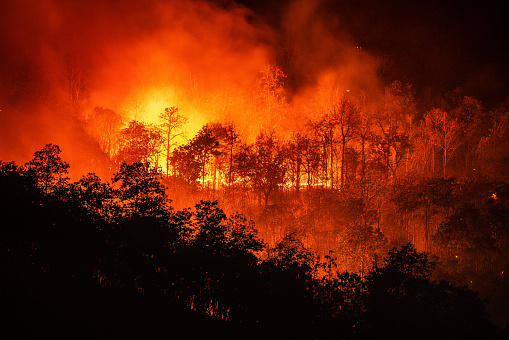
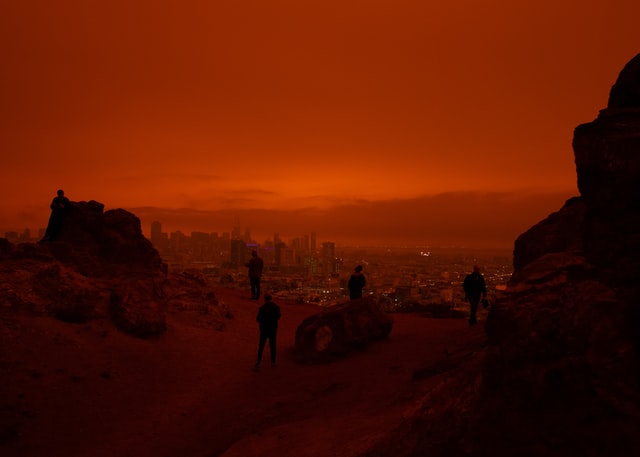
• Have several ways to receive alerts — you can receive warnings in real time if you have downloaded the FEMA app from the National Weather Service. Furthermore, you should sign up for local community alerts posted for your area from the Emergency Alert System, EAS, or the Wireless Emergency Alert.
• Sign up to receive email updates and check out the latest guidelines as posted from the CDC as well as local authorities that can help you protect yourself from the advent of the COVID-19.
• Stay tuned for air quality alerts.
• Everyone in your home should be familiar with the emergency procedure in case you have to evacuate
• Consider the latest CDC recommendations for Coronavirus and how this affects your plans.
• Make sure your insurance policies, identifications and any other personal documents are up to date.
• Make scanned copies and keep them in a secure digital space with a secure password.
• Fire-resistant materials can be used to build or make repairs to your home and property.
• Make sure you have access to an outdoor water source and a hose that can reach all areas of your property.
• Make your home a fire-resistant zone with no leaves, flammable debris or combustible materials for at least 30 feet from your home.
• Choose a room that can be cut off from outside air.
• You may have to leave your home as fast as possible. Study the escape routes and evacuation procedures and practice making this escape with your kids, pets and anyone else in your home.
• There is a chance that you will go to a public shelter, bring items that can help protect you from COVID-19.
• Listen to and follow the instructions from local authorities.
Make sure you have stored sufficient supplies in your home for an emergency situation. This includes medications, masks, disinfectant, pet supplies, etc. In a bag that can be quickly placed into a bag in your trunk. This will allow you to address smaller medical problems. Being fully prepared will allow you to avoid all unnecessary excursions to supply and medical centers. This can greatly relieve the burden on hospitals that will be considerably busy at this time.
Never forget, that not everyone will be taking the time to stock up on needed supplies. Those that do will ensure that they can make fewer trips to restock on their supplies and this will allow those who were unable to collect the supplies and items they need to procure their supplies quickly and easily. Furthermore, it is a good idea to avoid the WIC-labeled products as there will be some people who desperately need these.
• Be very careful about using and carrying items that could be flammable, combustible or cause explosions if not handled correctly. This can include hand sanitizers, aerosols, rubbing alcohol, cooking oil, etc.
• If you have a N95 mask, this can be used to protect yourself against the deadly effects of smoke inhalation. N95 masks can also help you reduce the spread of the COVID-19 virus, but they should be kept for special use by healthcare workers. If you are in a public space or in a shelter, use your mask to help reduce the spread of the OCVID-19 virus.
• When wildfires are a potential threat in your area, keep your phone fully charged to stay alert to the conditions around you. Furthermore, make sure you have a back-up charger that can keep your electronic devices fully charged.
Stay Safe During
• If the authorities have issued an evacuation alert for your local area, evacuate immediately.
• Make plans to relocate your family and friends to a shelter where they will be safe and comfortable in the event of an evacuation.
• If you have become trapped and unable to leave your location, call 911 and alert emergency services. Give them your locations and be aware that it may be impossible for them to reach you. Turn on your lights to help rescuers find you.
• Pay close attention to alerts and notifications for instructions and information about what is happening.
• Choose a room that can be isolated from the outside air. Set up an air cleaner or filter to keep air clean even if the rest of the home is filled with smoke.
• Make sure that the air filters in your home are equipped with high-efficiency air filters that can capture all fine particulate matter and keep smoke out. If your home has a ‘fresh -air’ mode” set the settings to recirculate and close the outdoor intake with a damper.
• Do not use anything in your safety room that will burn. Candles and fireplaces will consume oxygen and vacuuming can stir up particles into the air. Furthermore, do not smoke tobacco or anything else as this can increase the pollution in your home.
• If you have been ordered to evacuate but you see that the smoke levels are still causing you a threat, stay where you are. Or, you can relocate to a community building where the air is fresh and clean.
• Do not return to your home until the authorities have said that it is safe to do so.
• Stay away from hot ash, burned trees, debris and live embers. It is quite possible that the ground itself can contain hot sections of earth that can suddenly spark another fire. Make sure you have a good mask and stay a safe distance from other people while working with other people to reduce the spread of the Coronavirus. A good respirator will also protect your respiratory system while you are cleaning up ashes
• When cleaning up after a fire be sure to wear protective clothing, long pants, a long-sleeved shirt, work gloves, appropriate face coverings and thick sturdy soled shoes that can keep you safe from any unexpected perils.
• Use appropriate masks or respirators.
o Those suffering from asthma or any other respiratory conditions should be especially careful while working in areas with poor air quality as this can impact symptoms of their condition. Children should not be allowed to help with cleanup efforts.
o Pay attention to any conditions your children have including asthma, COPD, heart diseases etc. Seek medical help as needed.
• Document all property damage with photographs, conduct a full inventory of what occurred on your property in the wake of the wildfire. Contact your insurance provider.
• Continue to practice all safety measures to protect yourself from COVID-19 and any other infectious diseases. This includes washing your hands and keeping all surfaces as clean as possible.
• Use social media or text messages to stay in communications with your family and friends. Phone systems are often tied up so only make phone calls in an emergency.
